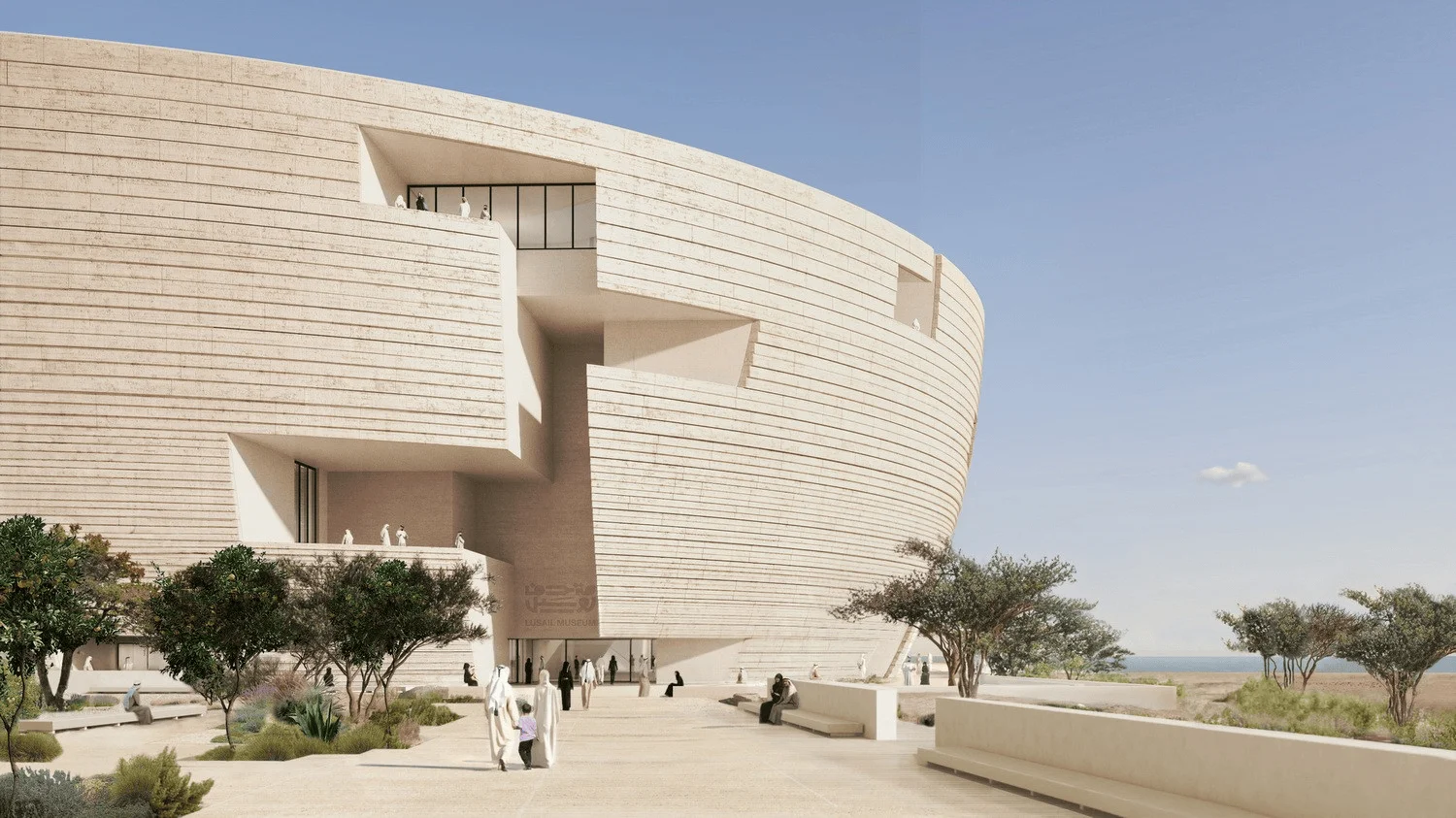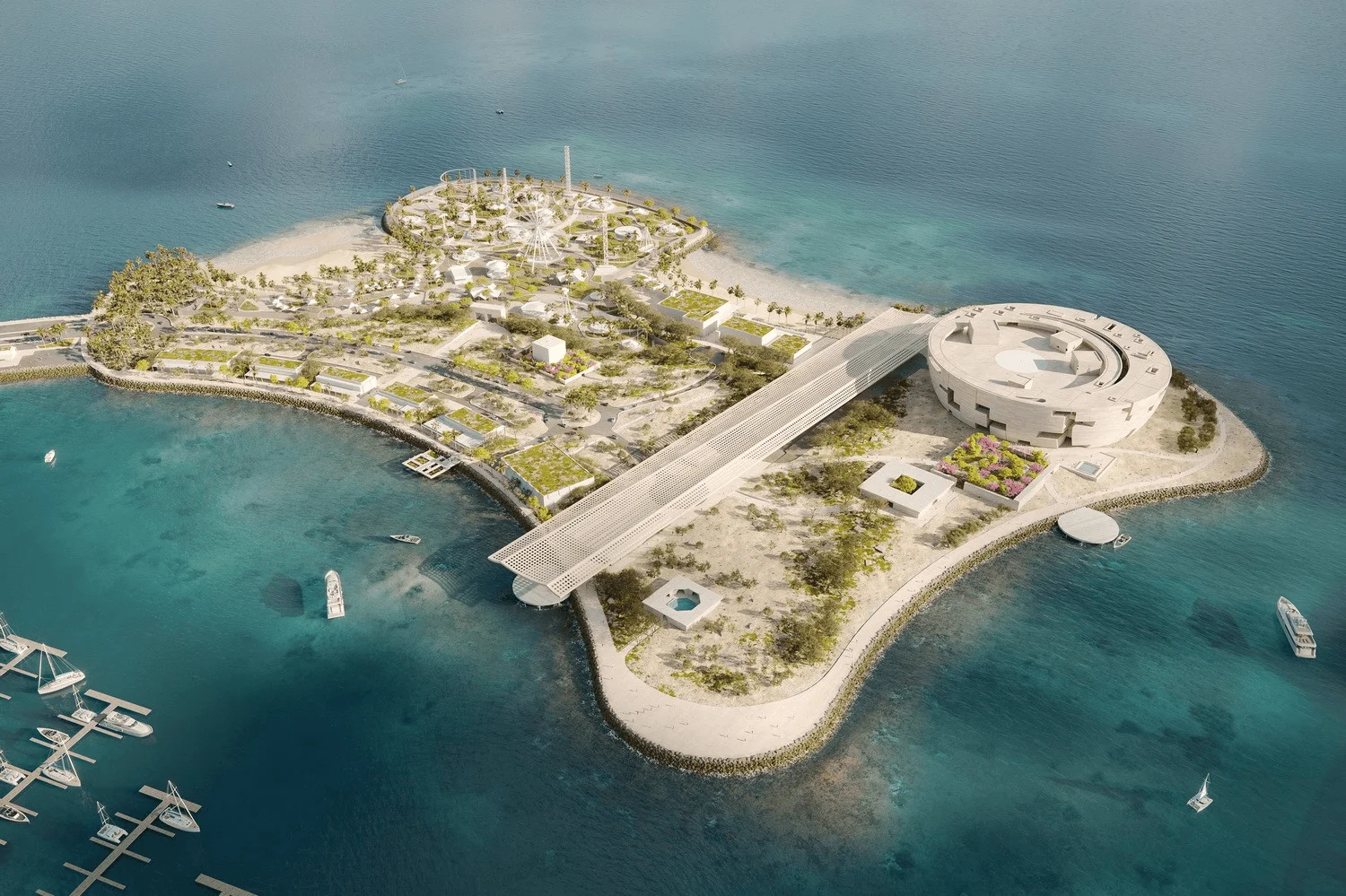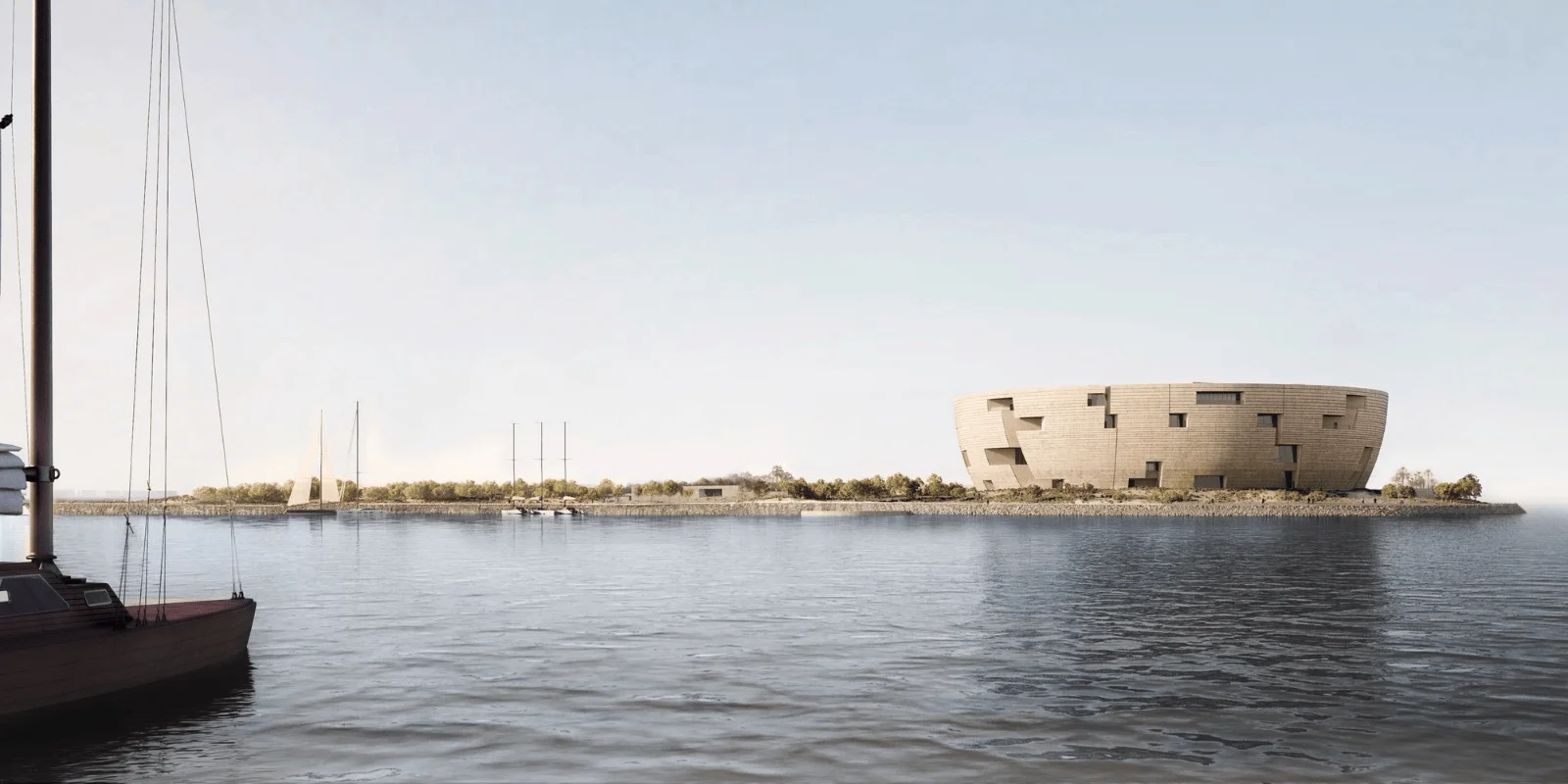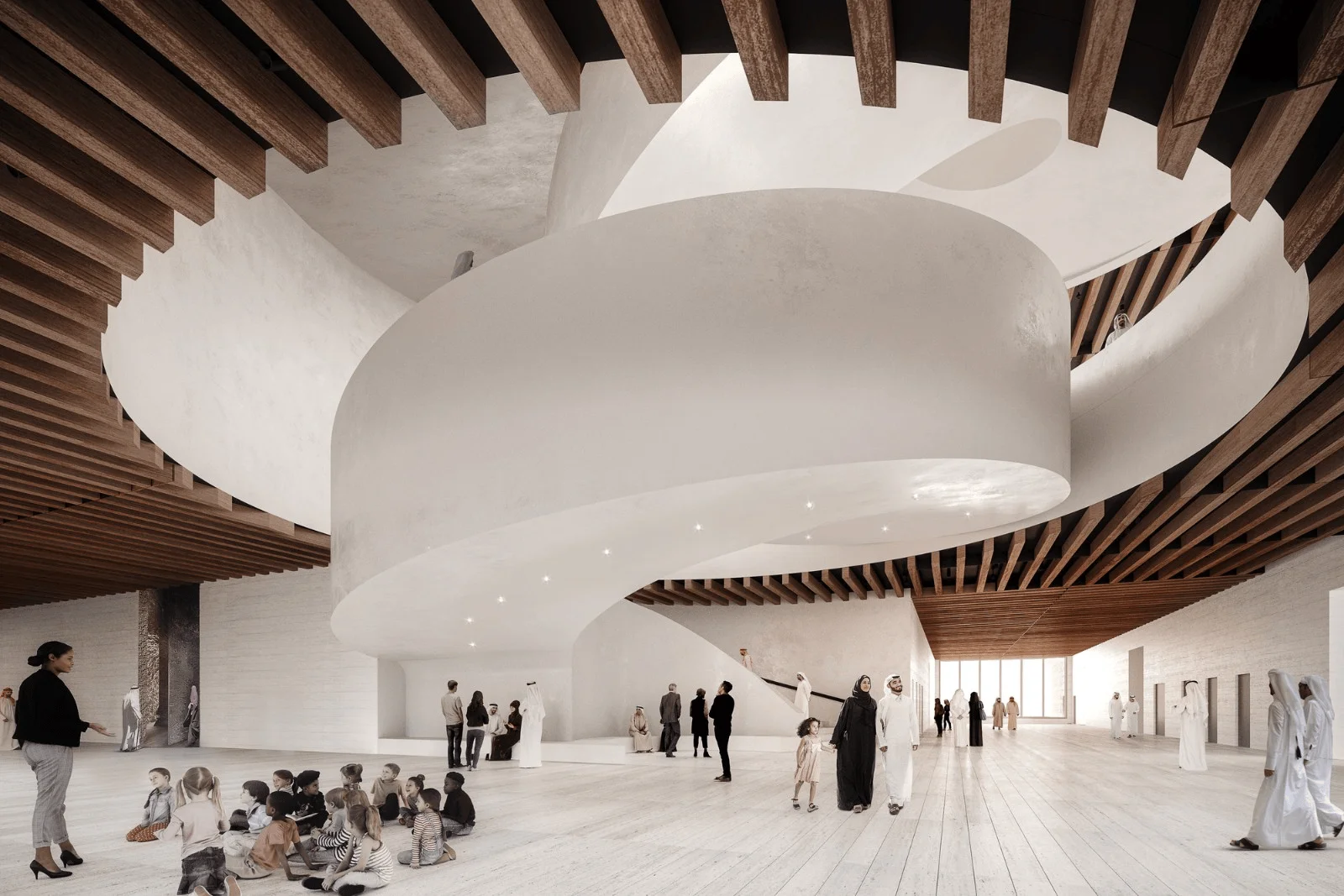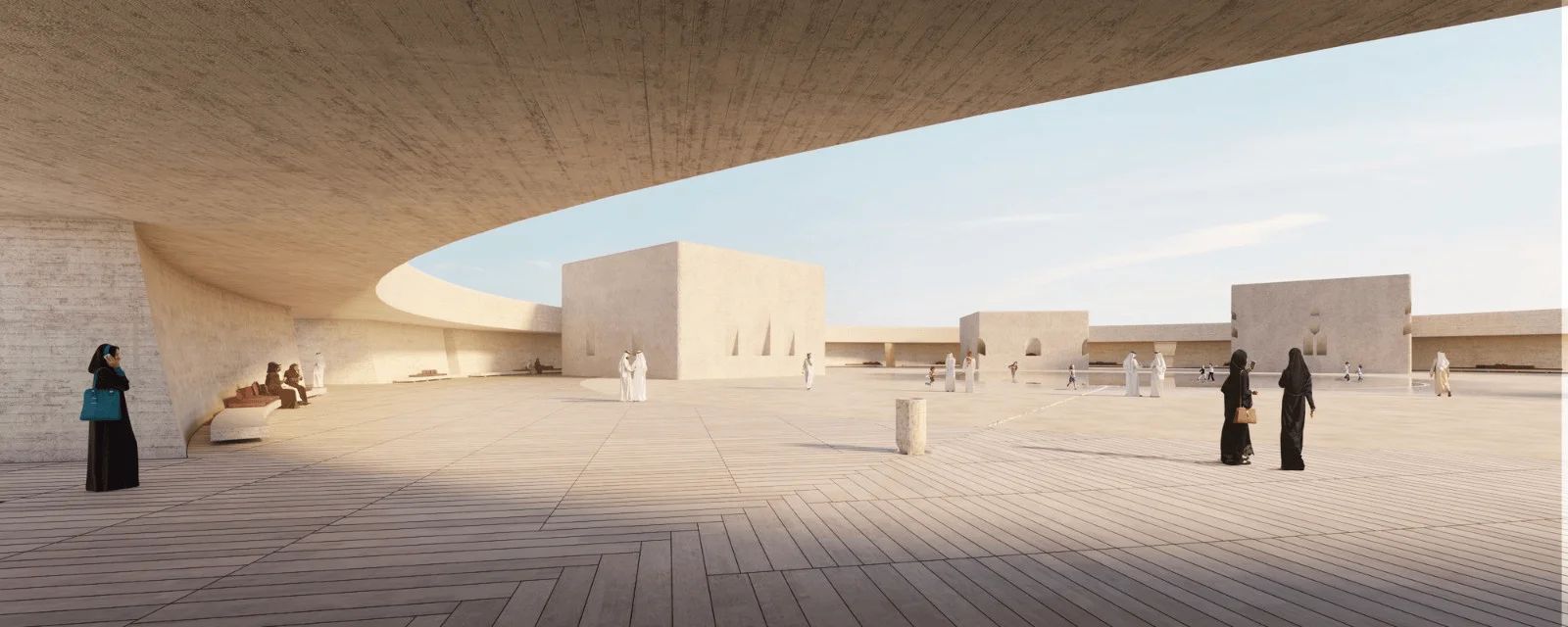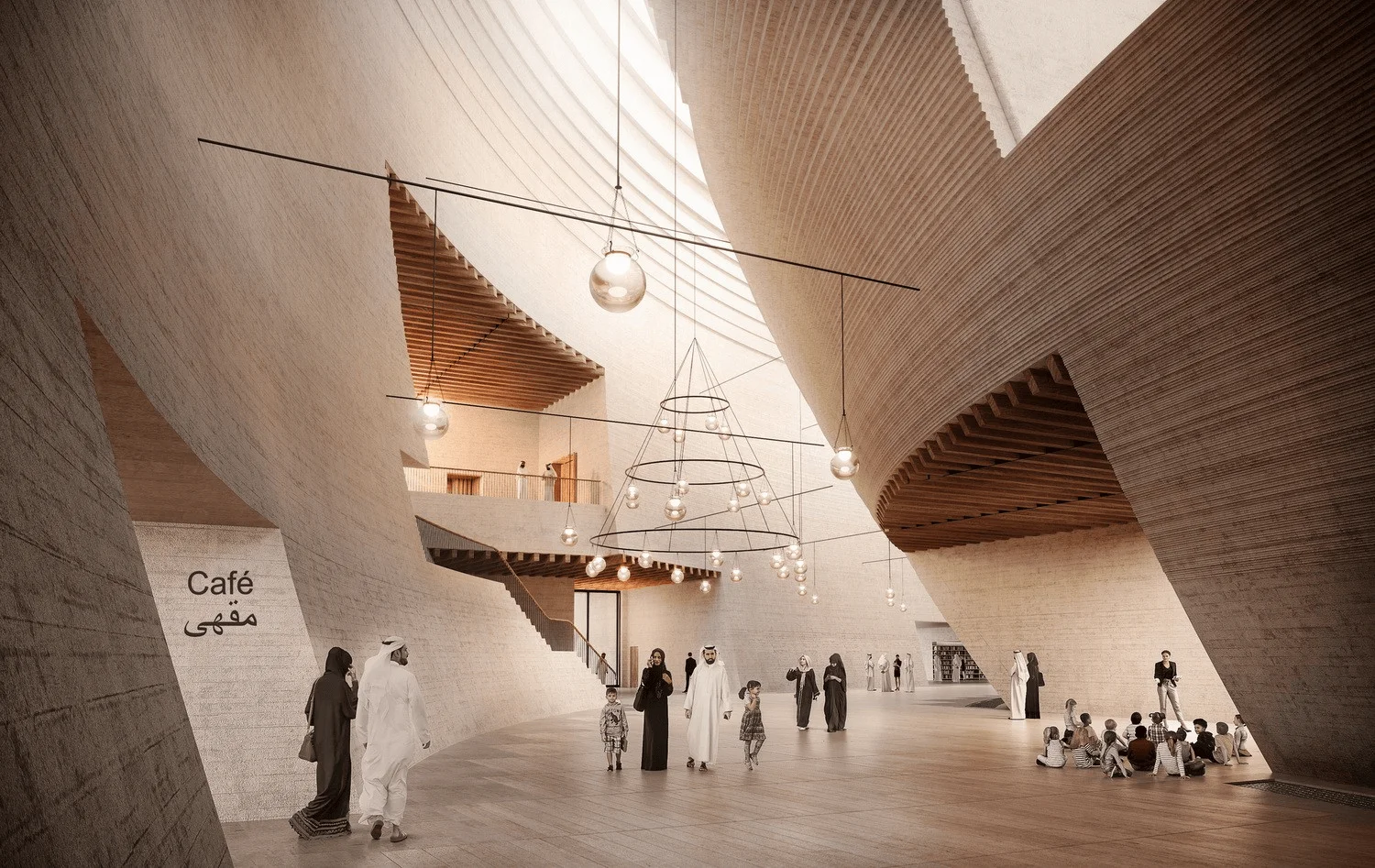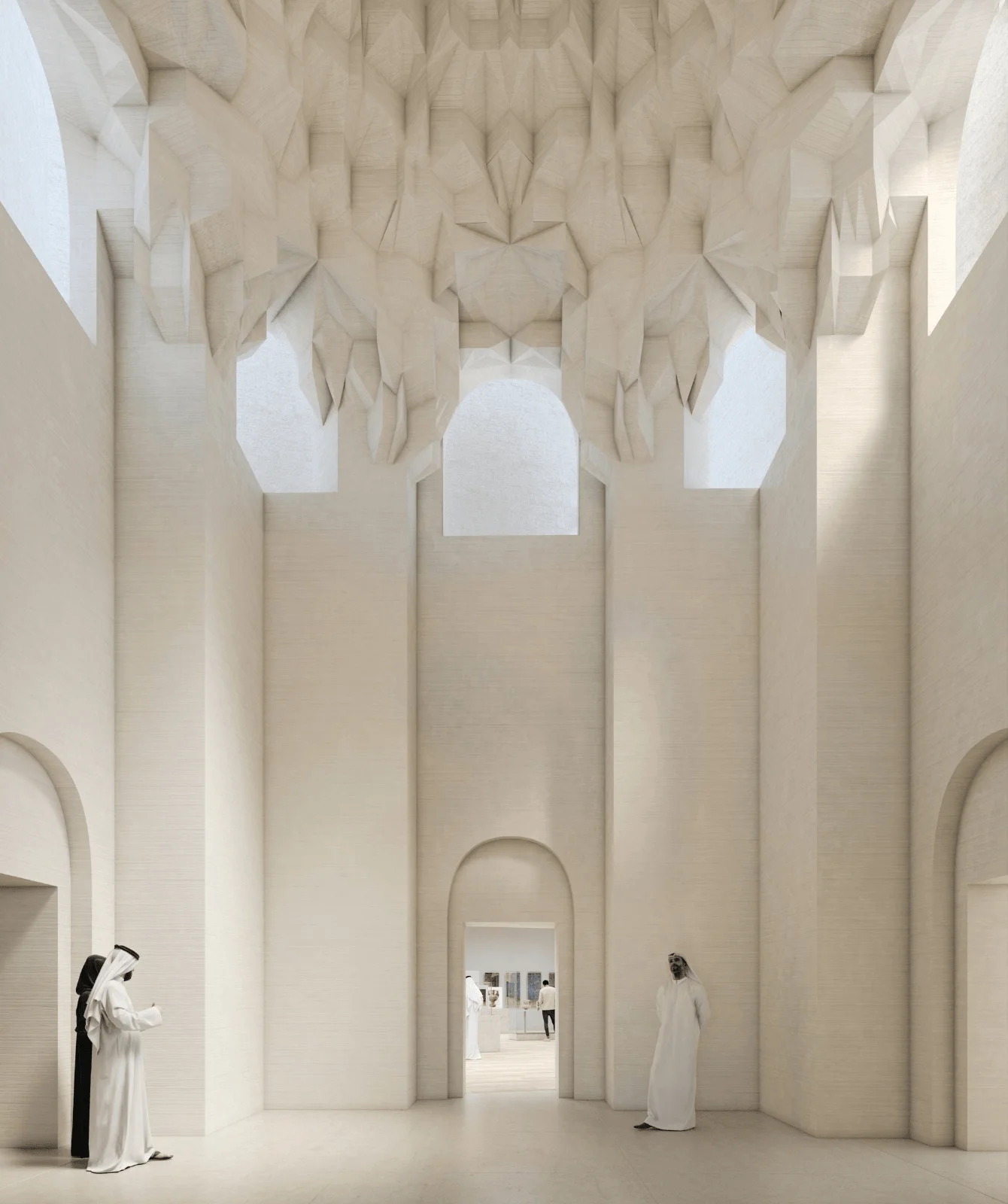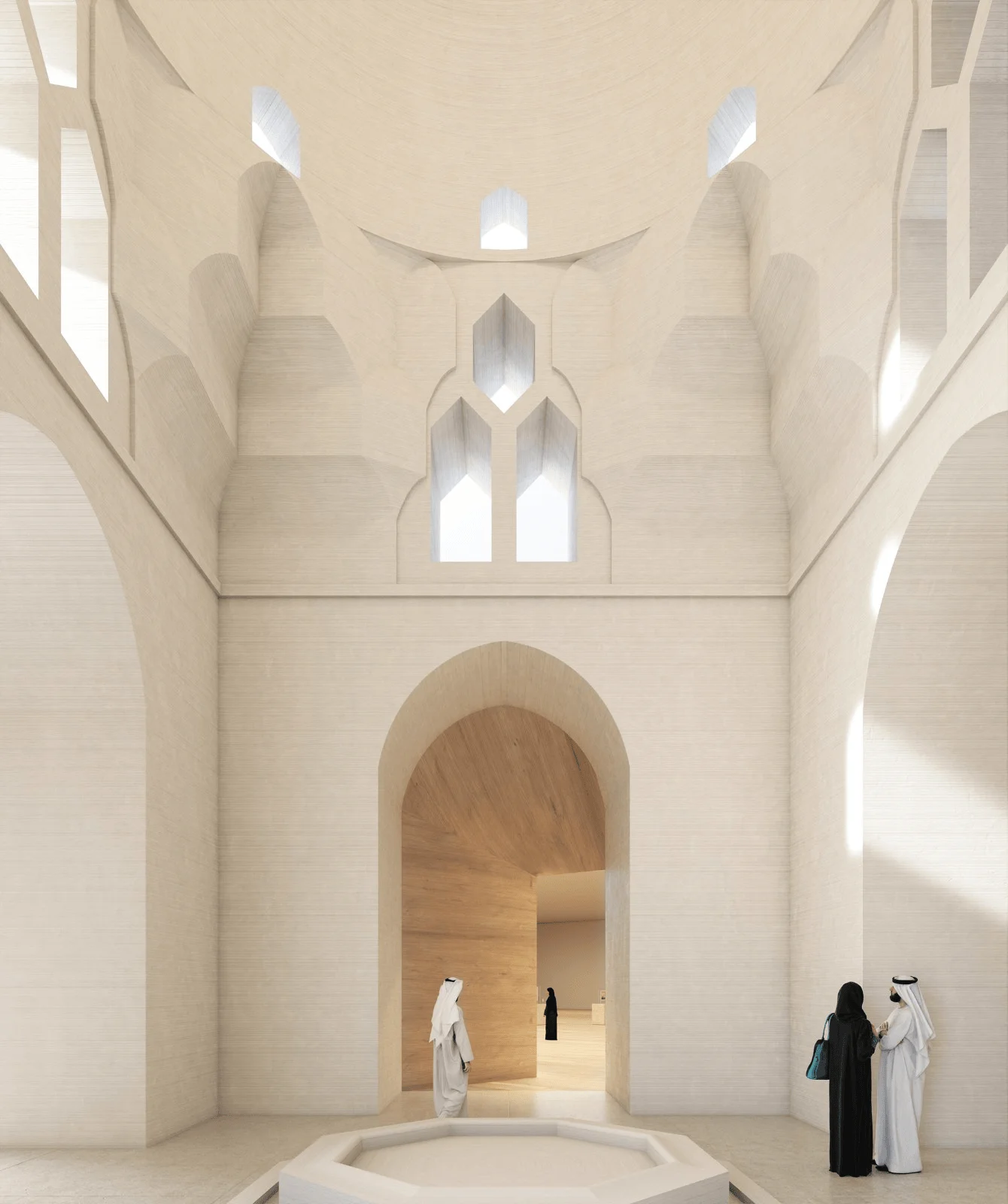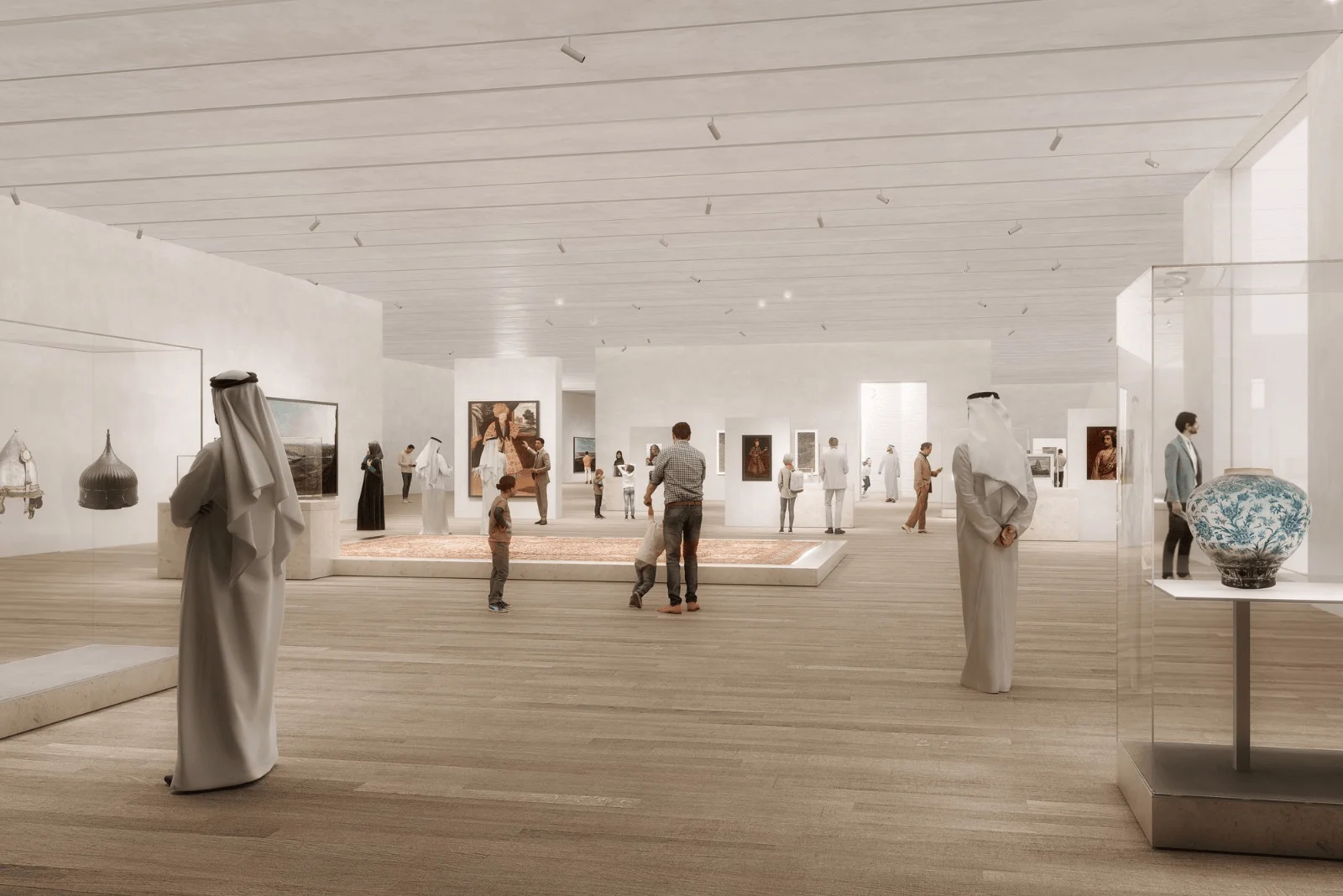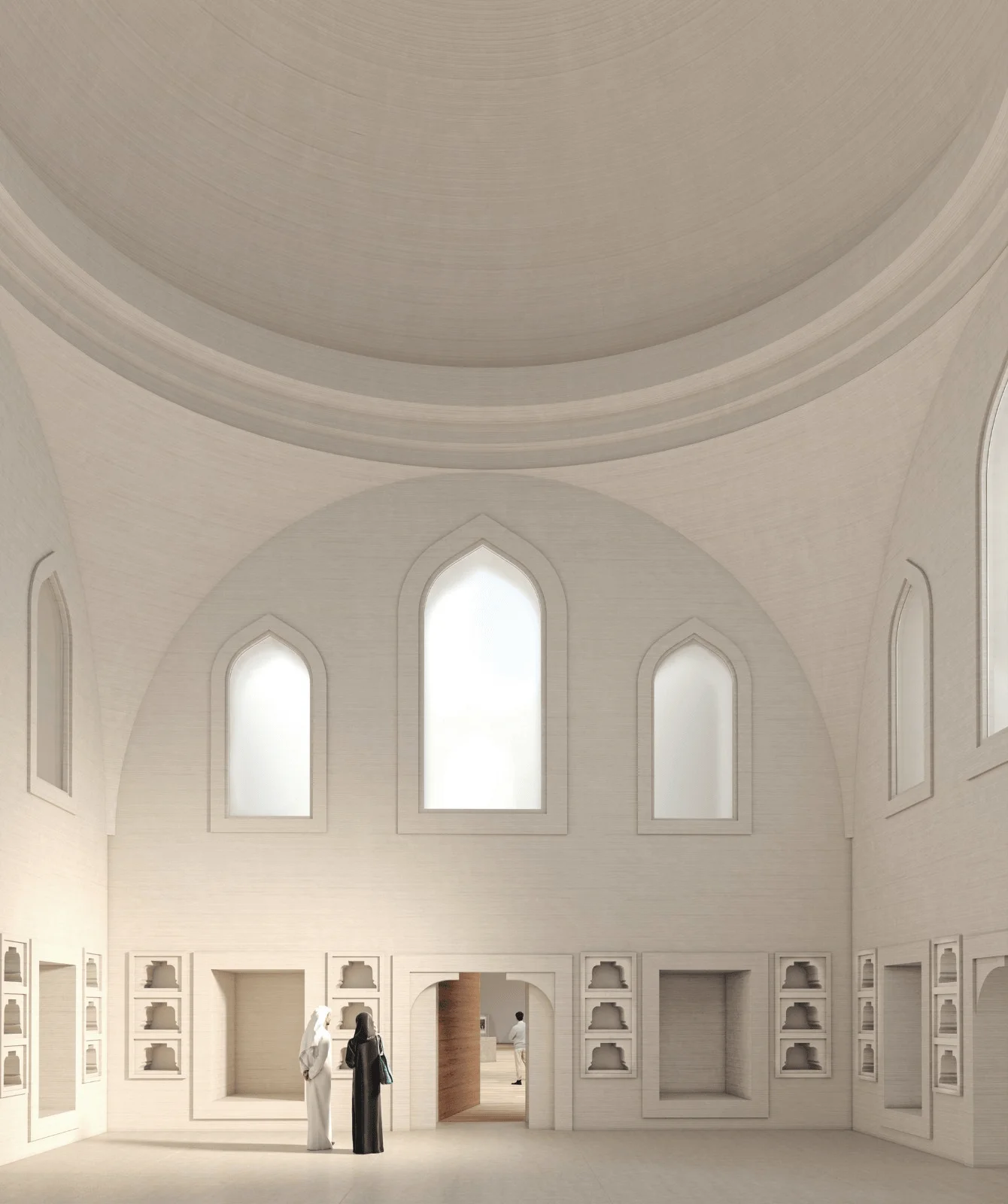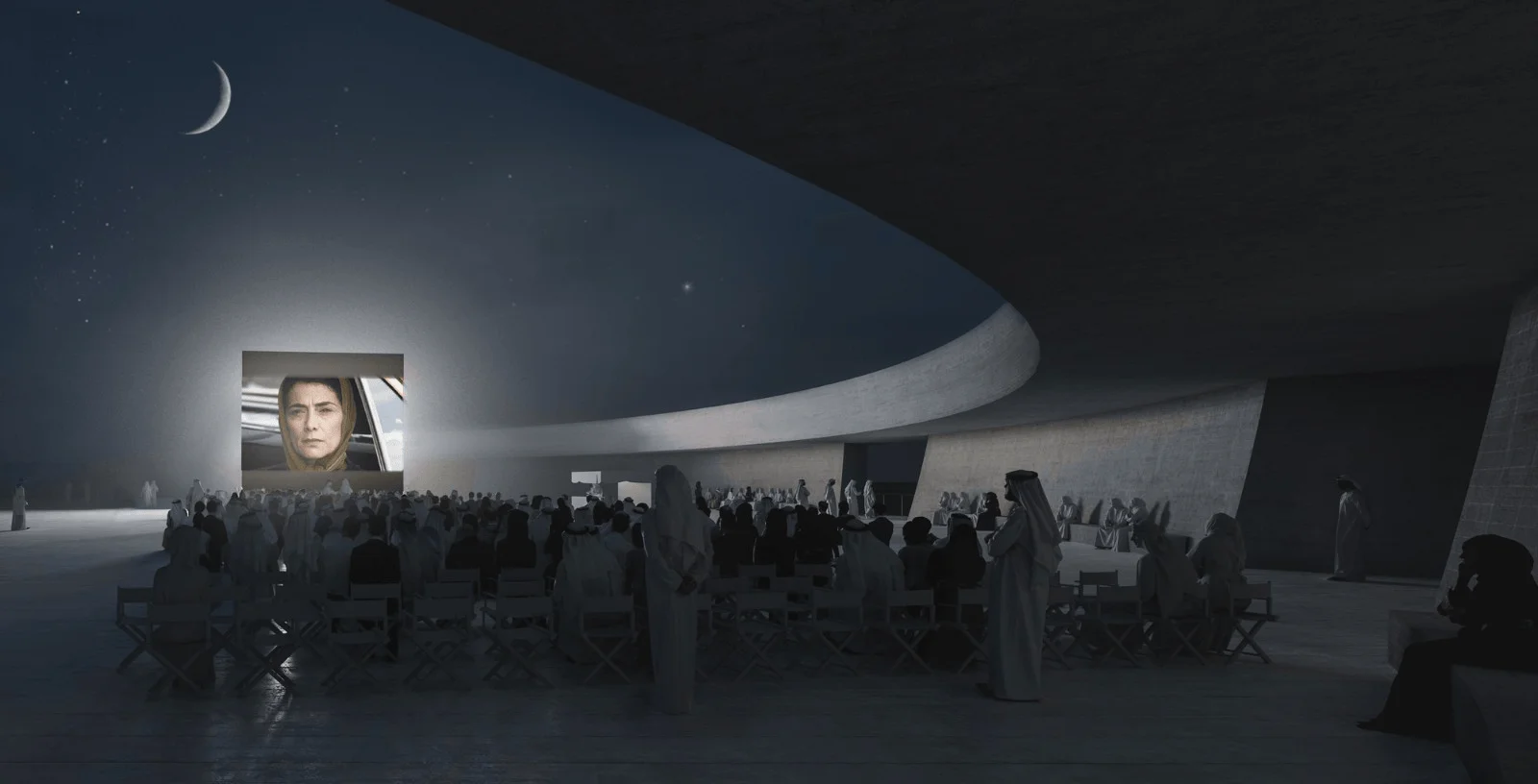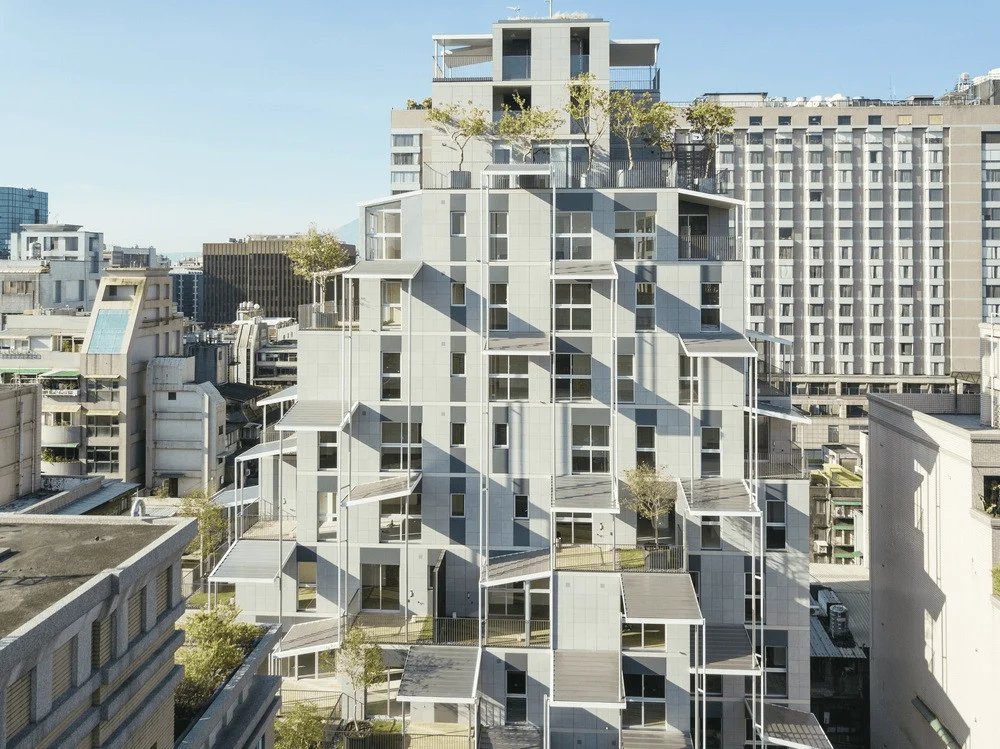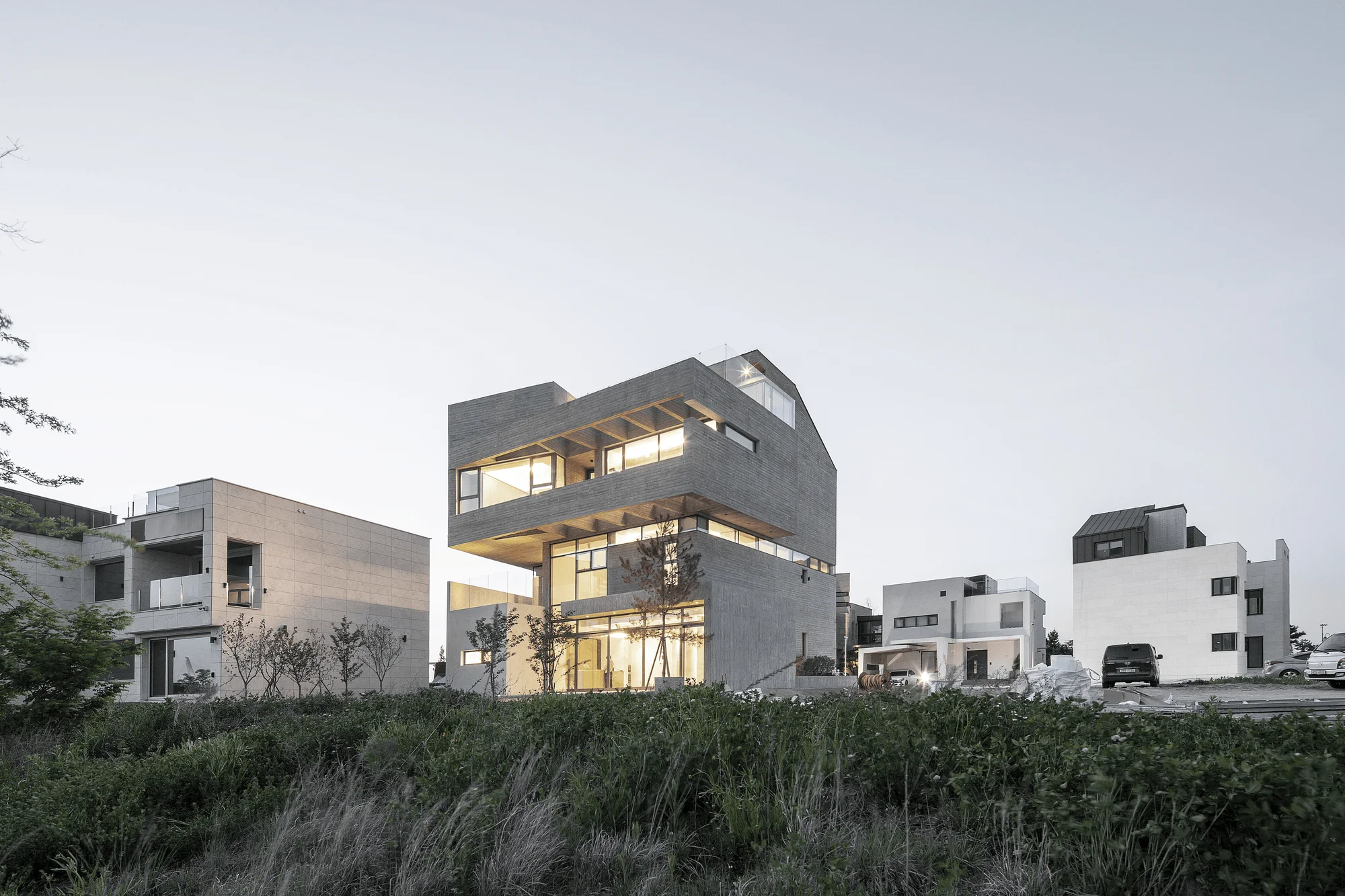The Museum of Islamic Art, Lusail, designed by Swiss architects Herzog & de Meuron, will be among the largest repositories of Islamic art collections and explore the flow of people and ideas across the globe over centuries. The new institution will also be dedicated to offering high-level research opportunities for scholars, academics, policymakers, and curators. As such, the building is envisioned as “a vertical layered souk, or a micro-city within a building,” aiming to encourage dialogue, debate, and reflection on global issues. Located at the southern tip of the island, the building is circular in design, inspired by local architectural traditions. The overall volume is sculpted, revealing crescent-shaped spaces that are illuminated from above and house public functions such as a library, auditorium, shops, cafes, and prayer spaces. The museum is situated near the former residence of Sheikh Jassim bin Mohammed Al Thani, the founder of modern Qatar, in the late 19th century, holding historical significance. The museum’s exterior is clad in rough, sandy materials that echo the coastal environment. To strengthen the connection to the local vernacular, the architects have collaborated with local craftsmen and artisans to showcase and preserve historical practices and industries. The variations in scale and materiality also help to create a sensorial experience for visitors. Spaces include a polished plaster staircase, a reflective metal prayer area, a timber library, a soft-walled auditorium, and various cushioned niches, all featuring a mix of materials like wood, textiles, metals, and tiles. The galleries vary in shape and proportions on each floor, accommodating a range of exhibitions. On the top floor, four abstract replicas from important historical buildings are the main spaces: the Mura III Bedroom Dome of the Topkapi Palace in Istanbul (1579), the Dome of the Jame Mosque in Natanz (1320), the Ablution Fountain of the Ibn Tulun Mosque courtyard in Cairo (1296), and the Aljaferia Dome in Zaragoza (1050). These spaces offer different types of curatorial and educational possibilities compared to traditional art museums. In a recent podcast interview, Sheikha Al Mayassa bint Hamad bin Khalifa Al Thani, Chairperson of Qatar Museums, discussed the project with Jacques Herzog. Together they explored Qatar’s modern cultural landscape and the significance of the architect’s inspiration and the museum’s location. Herzog & de Meuron also recently unveiled the design for a new cultural institution, Seoripul Open Art Depot, a collective archival space that will serve three museums in Seoul, South Korea, while also making collections accessible to a wider public. Earlier in 2023, Herzog & de Meuron were awarded the 36th Louis I. Kahn Award, an annual award established in 1983 in honor of the Philadelphia architect, Louis Kahn.
Project Information:


